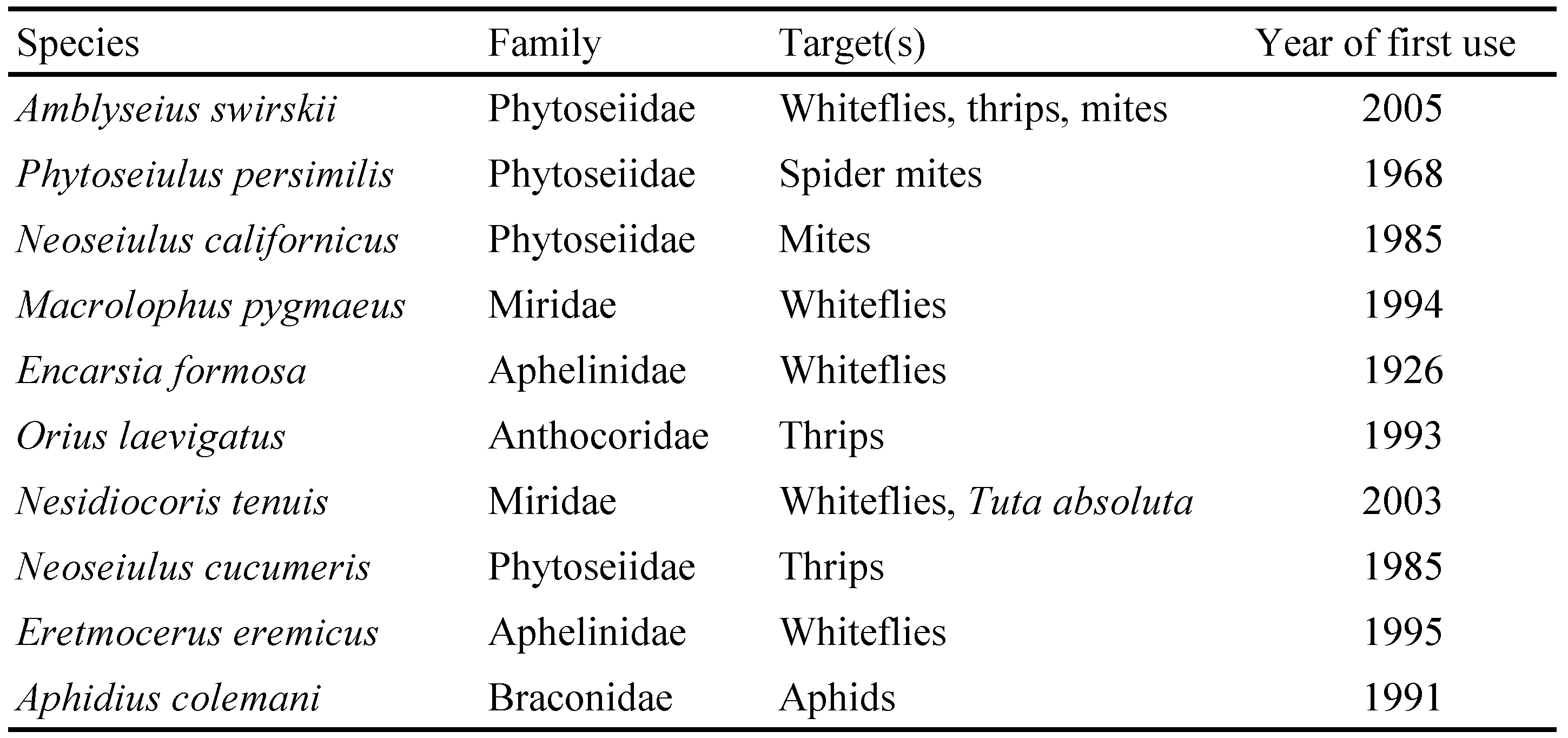
The use of BCA began in the early 19th Century, using live organisms or their metabolites to mitigate diseases in agricultural crops ( Badii et al., 2000). This helps produce innocuous foods and reduces the costs of agricultural production ( Reyes et al., 2015). The IPDM highlights the use of biological control agents (BCA) as a sustainable alternative to mitigate the negative effects in the productivity and quality of the crops caused by different diseases, reducing the resistance of phytopathogenic organisms, and reducing the contamination of soils and water tables. Thus, the Integrated Pest and Disease Management (IPDM) is a crucial alternative in the development of a sustainable agriculture that guarantees global food security, which uses the combination of biological, cultural and chemical methods in a compatible way (from Olivar et al., 2008). On the other hand, the incidence of pests and diseases can be minimized by the use of cultural practices such as crop rotation and the system of planting in separate plots however, these are not entirely efficient ( Sainju et al., 2016). captan, a fungicide used in Mexico, the use of which has been prohibited in other countries due to its carcinogenic effect ( Arellano-Aguilar and Rendón, 2016). However, despite the success in the application of these compounds in the increase of worldwide agricultural activity, their excessive use has had a negative impact on soils, ecosystems and human health, i.e. In this way, in order to fight diseases in crops, chemical compounds have been widely used, including insecticides, fungicides and nematicides. However, approximately 20 to 30% of the agricultural production is affected by pests and diseases, with fungi, bacteria, nematodes, viruses and insects being the main causal agents ( Pérez-García et al., 2011). Palabras clave: biocontrol fitopatógenos bioplaguicidasĪgriculture is a decisive activity in worldwide economic, social and environmental development, since it contributes to 80% of the food consumed globally ( FAO, 2014). Además, se analiza el uso del género Bacillus en la agricultura bajo un enfoque de bioseguridad agrícola, así como los principales criterios indispensables de selección de agentes de control biológico promisorios, considerando cepas no patogénicas para el ser humano, y que no impacten negativamente a las comunidades microbianas de los agroecosistemas, como efecto secundario por su actividad biológica no específica contra un fitopatógeno en particular. En la presente revisión se describe y analiza al género Bacillus, y sus principales mecanismos de acción, tales como la excreción de antibióticos, toxinas, sideróforos, enzimas líticas e induciendo la resistencia sistémica, enfocado en su capacidad para ser utilizado como agente de control biológico de plagas y enfermedades en plantas así como su uso en la formulación de bioplaguicidas, que han sido incorporados a los programas de Manejo Integrado de Plagas y Enfermedades. 1977.El género Bacillus se encuentra ampliamente distribuido en los agro-sistemas y una de sus principales aplicaciones es el control de enfermedades de cultivos agrícolas.


Use of dinitrosalicylic acid reagent for determination of reducing sugar. Combinations of biocontrol agents for management of plant-parasitic nematodes and soilborne plant pathogenic fungi. Lytic enzymes of Trichoderma and their role in plant defense from fungal diseases, a review. Isolates showing high levels of chitinase and $$-1,3-glucanase from the mycoparasitic fungus Trichoderma asperellum. asperellum isolates towards FOL and their lytic enzyme production. There was a correlation between the antagonistic capacity of T. asperellum isolates significantly reduced the mycelial growth of FOL isolates but the amount of growth reduction varied significantly as well.

The random amplified polymorphic DNA (RAPD) method was applied to assess the genetic variability among the T. The production of extracellular cell wall degrading enzymes of the antagonistic isolates was also measured. asperellum against 4 different isolates of FOL. We evaluated the antagonistic activity of 30 isolates of T. lycopersici (FOL) is a promising alternative strategy to pesticides for tomato wilt management. The use of novel isolates of Trichoderma with efficient antagonistic capacity against Fusarium oxysporum f.


 0 kommentar(er)
0 kommentar(er)
